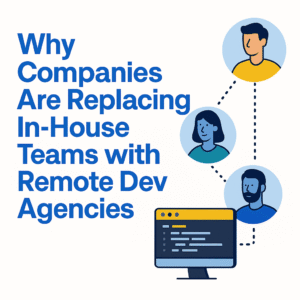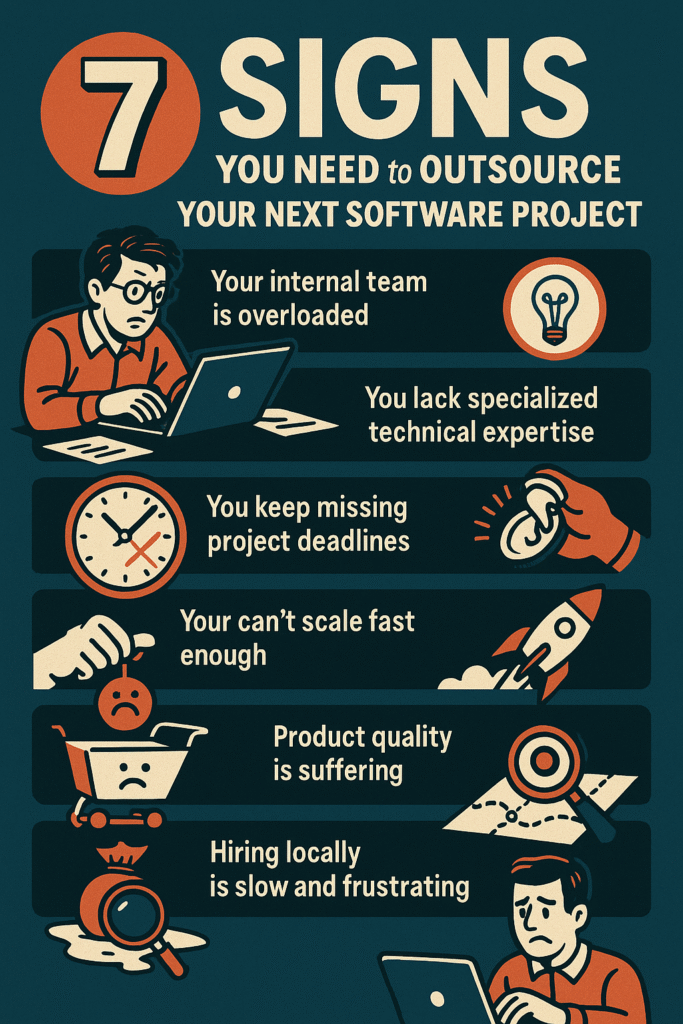
In an increasingly digital-first world, how companies build software is undergoing a fundamental shift. Startups and scale-ups, once dependent on building internal development teams, are now opting for leaner, more scalable models namely, partnering with remote development agencies. This transformation is not just about saving money; it’s about moving faster, tapping global expertise, and reducing the friction of building and maintaining teams. One of the emerging leaders in this space, Munesoft, exemplifies why the remote dev agency model is rapidly overtaking traditional in-house teams.
The Drivers Behind the Shift
1. Cost Efficiency without Compromise
Hiring, onboarding, and retaining in-house developers in regions like North America or Western Europe can be prohibitively expensive. According to Glassdoor, the average software developer salary in the U.S. exceeds $110,000 per year before benefits, office space, and HR overhead are even considered. Remote development agencies eliminate many of these costs. Munesoft, for example, provides end-to-end engineering teams at a fraction of the cost, without sacrificing code quality or delivery speed.
2. Access to Global Talent Pools
In-house hiring limits a company’s talent search to local or relocated professionals. Remote agencies, on the other hand, tap into pre-vetted developers from global markets like India, Eastern Europe, Latin America, and Africa, bringing in diverse technical expertise and unique problem-solving approaches. This diversity often results in more robust and innovative products.
3. Faster Time-to-Market
Speed is the currency of startups. Every week lost in recruitment is a week lost in customer acquisition or product evolution. With agencies like Munesoft, companies can deploy full-stack teams in days not months dramatically reducing time-to-market for new features or MVPs.
4. Built-in Flexibility and Scalability
Need to scale from 2 developers to 10? Or reduce headcount after a sprint without painful layoffs? Remote agencies offer plug-and-play flexibility. Munesoft allows clients to ramp up or down based on business needs, without long-term contracts or compliance headaches.
5. Reduced HR and Management Overhead
Hiring is just the beginning. Managing an in-house team requires performance reviews, team dynamics, PTO policies, and culture building. Agencies handle all of that internally. With Munesoft, for instance, clients get a dedicated project manager who ensures delivery while the agency handles all the internal people ops.
The Pitfalls of In-House Hiring
While having an internal dev team offers perceived control, the downsides are increasingly hard to justify, especially for fast-moving companies:
-
High fixed costs: Salaries, benefits, equipment, and office space add up quickly.
-
Slow recruitment cycles: Hiring tech talent can take 2–4 months per role.
-
Limited tech stack diversity: Internal teams often lack specialists in emerging tools and frameworks.
-
Burnout and attrition: Developers in small teams wear many hats, increasing stress and turnover.
Why Remote Dev Agencies Like Munesoft Win
Munesoft’s model aligns perfectly with what modern startups need:
-
Specialized pods: Cross-functional teams with backend, frontend, QA, and DevOps.
-
Transparent workflows: Agile development, daily stand-ups, sprint reports, and real-time collaboration.
-
Timezone alignment: Developers work in overlapping hours with client teams for seamless communication.
-
Built-in quality assurance: Peer code reviews, automated testing, and CI/CD pipelines are standard.
Real-world case: One fintech startup partnered with Munesoft after spending six months trying to hire a senior backend engineer. Within 10 days, they had a full squad working on their product roadmap and shipped features that had been blocked for weeks.
Making the Transition from In-House to Agency
Switching models doesn’t have to be disruptive. Here’s a phased approach that many companies use:
-
Start with a pilot project – Test the agency with a well-scoped sprint or feature.
-
Identify core vs. non-core engineering tasks – Keep strategic roles in-house; outsource the rest.
-
Use hybrid models – Combine a small internal team with a remote agency pod.
-
Align on process early – Agree on tools (Jira, Slack, GitHub), cadences, and deliverables upfront.
-
Build institutional knowledge – Ensure documentation and handoff processes are embedded from day one.
The days of building massive internal engineering teams from scratch are fading. Modern companies are looking for speed, efficiency, and adaptability and remote development agencies deliver on all three. Munesoft is part of a new wave of agencies helping businesses ship better products faster, without the overhead of traditional team-building.
As the tech hiring market tightens and global talent becomes more accessible, outsourcing is no longer a compromise it’s a competitive advantage.

